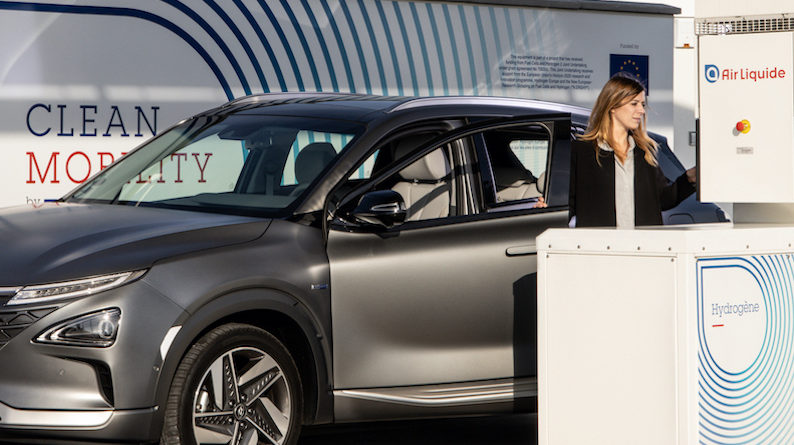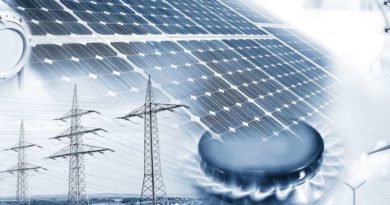
Hydrogen: Time to scale up !
The development of low-carbon hydrogen is key for the decarbonization of our society. Hydrogen is a central pillar of the energy transformation required to limit global warming to 2°C. To achieve this scenario, the world will need to decrease energy-related CO2 emissions by 60% by 20501
1. Hydrogen can play a major role in this transition. In 18 applications in the sectors of transportation, heating and feedstock for the industry, hydrogen could become the low-carbon solution the most competitive in 20302
2. In the context of the Covid crisis, many countries have released recovery plans rightfully putting hydrogen at the center of the economic recovery. In 2020, several Member States such as Germany, France, Portugal and Spain published their hydrogen strategies in order to develop the sector by allocating each several billions to it.
Most recently, the French government created the National Hydrogen Council (co-chaired by two CEOs, Patrick Koller from Faurecia and Benoît Potier from Air Liquide), to structure the relation between the industry and the government in the hydrogen sector.
On its side, the European Union has set, in its ambitious hydrogen strategy presented in July, a production target of up to 10 million tonnes of renewable hydrogen in the EU by 2030, for which large investments are needed. These will be discussed in the European Alliance for Clean Hydrogen.
Air Liquide has been supporting for a long time of Hydrogen and has therefore warmly welcomed all these initiatives. We think that now is the time to scale-up and accelerate.
As a world leader in gases, technologies and services for Industry and Health, Air Liquide is present in 80 countries with approximately 67,000 employees and serves more than 3.7 million customers and patients. With more than 50 years of experience in the entire hydrogen value chain from production to storage, transportation and end-uses, it is our ambition to play a world leading role in hydrogen solutions, as well as in processes and technologies necessary to decarbonize industries and energy use. In order to open up a new chapter, we have recently adapted our internal organization to steer the way in the hydrogen world.
Air Liquide is committed to further develop hydrogen markets in Asia, the Middle East, the US and Europe, in industry to decarbonize, steelmaking processes, electronics, chemistry, refineries as well as the mobility market. Also in the space sector Air liquide has been preparing, testing, and optimizing the installation and connections of cryogenic lines for launch pads since the 1980s, including liquid hydrogen for the Ariane rocket.
Air Liquide is convinced that it is necessary to develop global industrialisation programs to finance series and deployment at scale or a support program focusing on key value chains.
According to the FCHJU, the projected deployment of hydrogen would create an estimated EUR 820 billion industry for the fuel and associated equipment for EU companies by 2050. At the same time, the EU hydrogen industry could provide employment for about 5.4 million highly skilled workers3
3. One of our main targets is to gradually decarbonize the production of hydrogen. For mobility applications as an exemple, we are committed to achieve 100% low-carbon or renewable hydrogen supplied by 2030.
To achieve this objective, it is necessary to combine amongst other biogas reforming, the (access and) use of renewable energies, through water electrolysis as well as the use of technologies for the capture and storage of carbon emitted during the process of producing hydrogen from natural gas.
Over the last years, our Group has accelerated its investments in clean hydrogen. A few recent announcements:
– together with the Port of Rotterdam Authority, launch of a jointly created initiative, which aims at enabling 1,000 hydrogen-powered zero-emission trucks on the roads connecting the Netherlands, Belgium, and western Germany by 2025 ;
– 40% stake acquisition in the capital of the French company H2V Normandy, which aims to build a large-scale electrolyzer complex of up to 200 MW for the production of renewable and low-carbon hydrogen in France ;
– inauguration (in January 2021), of the world’s largest electrolyser – 20 MW PEM unit – based on renewable electricity in Becancour, Canada ;
– a Franco-German cooperation with Siemens Energy to lay the ground for mass manufacturing of electrolyzers that will produce green hydrogen.
It is crucial to keep in mind that the success of hydrogen requires a systemic approach, from upstream decarbonisation pathways to downstream user segments. The EU will have the opportunity to set a favourable landscape for the development of hydrogen this year, notably through the ‘Fit to 55’ package and the review of the gas package.
Putting in place the right instruments and dedicated legal frameworks will allow hydrogen to become the second leg of the energy transition alongside renewable electricity by replacing coal, oil and gas across different markets of the economy.
1) In order to be successful in the transition towards green hydrogen, it is necessary to foster low carbon hydrogen as well, in particular through to support the development of CCS projects as in the Netherlands or Norway and address regulatory obstacles. We already manage a Carbon Capture unit in Port-Jerome in France, convinced that all renewable and low-carbon hydrogen production means should be considered and largely deployed to reduce costs and optimise carbon emission reductions. It is therefore paramount to secure a level playing field between users and producers for access to renewable energy and CO2 storage.
2) Also, a Guarantee of Origins system dedicated to hydrogen and relying on what the CertifHy European project has developed, would help attesting the evolution towards carbon neutral hydrogen production and giving an appropriate market value.
3) Concerning usages, we could distinguish between the main applications of hydrogen in order to tailor the policy framework and trigger markets uptake.
Some of these markets might need a stepstone approach for regulation, however, H2 for industrial application and their associated infrastructure could remain driven by the existing and functional market.
4) On the other hand, mobility applications should be at first and highly supported considering the impact on air quality and therefore public health, the maturity of the technologies and their spillover effects on the other segments. Each country needs to foster the scaling-up of distribution infrastructures in the transportation sector to prepare the users’ shift towards zero emission mobility. The Alternative Fuel Infrastructure Directive revision should enable the development of hydrogen infrastructure in all EU countries with ambitious deployment targets.
5) In order to address the production cost gap of clean hydrogen with conventional hydrogen, setting a carbon contracts for difference (CCfD) scheme in which the EU could pay the difference between a strike price and CO2 market price in the ETS program would be a solution that Air Liquide supports.
Along with the right legal framework, the EU has to continue to financially support large scale projects of hydrogen production and uses to facilitate the large scale deployment and uptake of clean hydrogen to help decarbonize downstream uses.
It is necessary that the various existing funding instruments (CEF, Horizon 2020, the ETS-Innovation Fund, etc.) are designed and combined to finance the whole hydrogen value chain. The on-going setting of the EU Taxonomy must make it possible to direct funding towards renewable hydrogen and low-carbon projects in line with the Certifhy approach.
We believe that, with these policy and financial support measures, our European continent holds unique conditions which can facilitate clean hydrogen markets growth in the coming years. It is time for the sector to scale-up and for companies to play their role on the international scene. Air Liquide is ready to lead the way with its strong industrial know-how and expertise in this field.
[1] IEA Report “Energy Technology Perspective” (2017)
[2] Study “Path to hydrogen competitiveness”, from the Hydrogen Council (2020)
[3] Report “Hydrogen Roadmap Europe’, FCHJU (2019).




